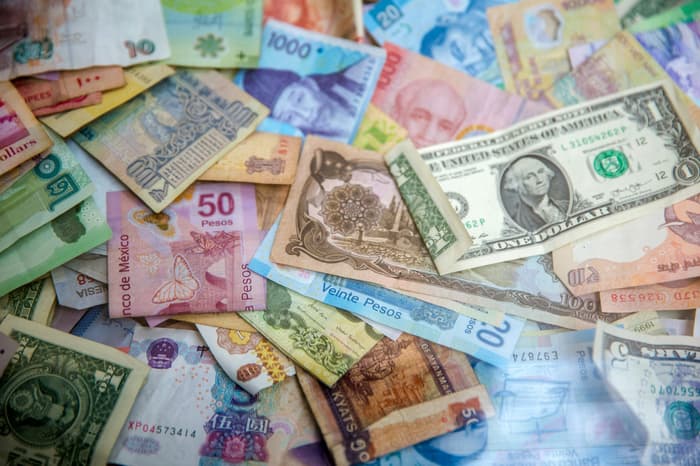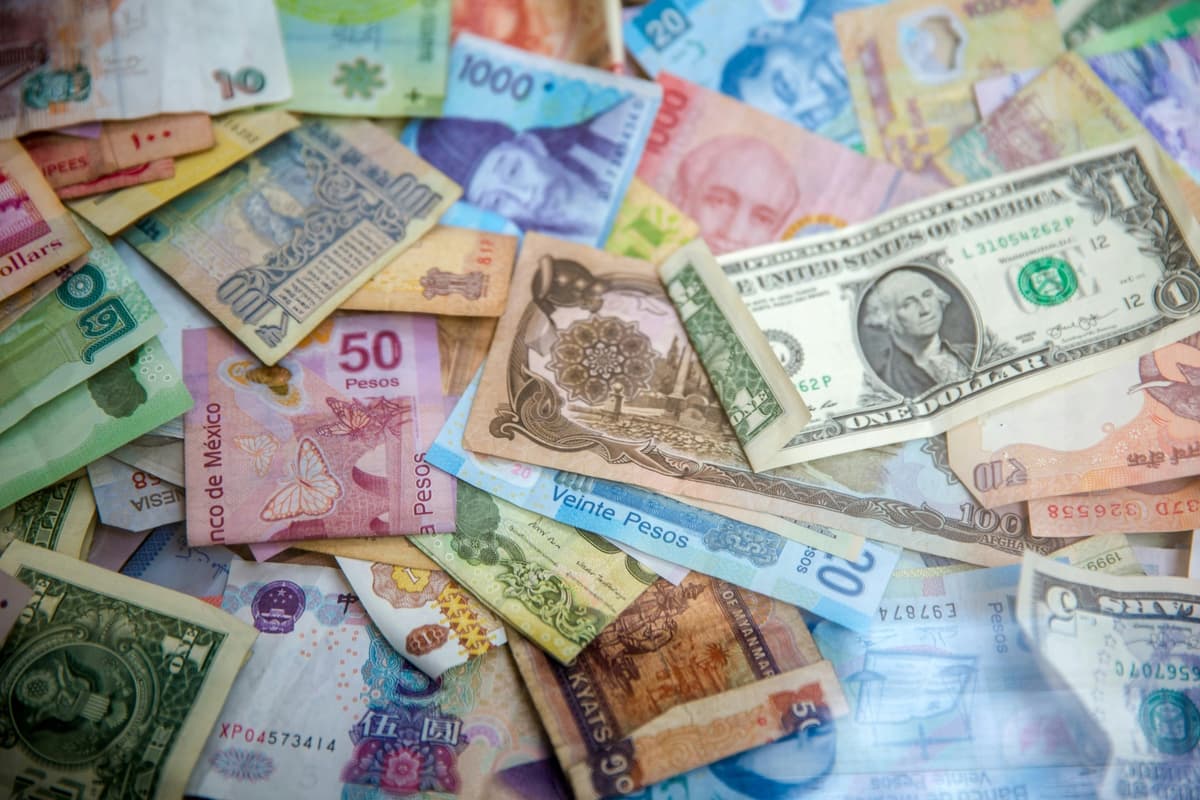10 Strongest Currencies in the World
Human history has been shaped by the pursuit of valuable resources through trade, treaties, colonisation, and conflict. Today, nations compete economically, leveraging the strength of their currencies. Currency emerged centuries ago as a replacement for barter systems, initially as "commodity money" with intrinsic value tied to precious metals. The evolution towards "representative money" reflected practicality over intrinsic worth, backed by its ability to trade for goods. Today, a nation's economic power is symbolised by the strength of its currency in global trade. This guide looks at some of the strongest currencies in the world measured against the benchmark of the United States dollar as the standard currency.


1. Kuwaiti Dinar KWD
The Kuwaiti Dinar (KWD) is one of the strongest currencies in the world, valued at approximately $3.26 as of June 2024. Introduced in 1961 to replace the Gulf rupee, the KWD's strength is underpinned by Kuwait's robust economy, which heavily relies on oil exports. Unlike many oil-rich nations, Kuwait efficiently utilises its oil revenues, contributing to its wealth and stability. Initially pegged to the British pound and later to an undisclosed basket of currencies, the KWD's value is bolstered by high demand for oil transactions conducted in this currency. This strategic economic management and high global oil demand maintain the KWD's high value.
2. Bahraini Dinar BHD
The Bahraini Dinar (BHD) is one of the world's most valuable currencies, pegged to the US Dollar at 1 BHD: $2.659 since 1971. Introduced in 1965, the BHD replaced the Gulf rupee and is regulated by the Central Bank of Bahrain. Bahrain’s economy heavily relies on oil and gas, with 85% of the government budget funded by oil revenues. Despite regional volatility, Bahrain has maintained economic stability through developmental changes and effective policies. Additionally, Bahrain’s status as a regional financial hub attracts international capital, further enhancing the BHD’s value.
3. Omani Rial OMR
The Omani Rial (OMR) emerged as Oman's official currency in 1970, replacing the Maria Theresa thaler and the Indian rupee that were used in Muscat and Oman. Oman's rigorous monetary policies and significant oil production have been pivotal in maintaining the OMR's value, which has been pegged to the US Dollar at $2.65 since 1986. The currency's value is reinforced by consistent oil exports priced in USD, ensuring substantial reserves in US dollars. Oman's political stability and steady economic growth, supported by stable interest rates, further reinforce the OMR's peg and maintain its high value against global currencies.
4. Jordanian Dinar JOD
The Jordanian Dinar (JOD) was adopted in 1950 to replace the Palestine pound, and the dinar's stability is maintained through a fixed exchange rate system pegged to the US Dollar at $1.41. This peg ensures that the dinar's value remains steady, shielding it from fluctuations driven by supply and demand dynamics. Jordan's decision to peg to the USD stems from the dollar's global stability and widespread acceptance, which enables financial predictability and attracts investment. While this peg enhances economic stability, it also means that Jordan's central bank cannot independently adjust the dinar's value in response to domestic economic shifts, relying instead on broader trends in the USD.
5. British Pound Sterling GBP
The British Pound (GBP), one of the oldest currencies still in use, maintains its prominence as the fifth-strongest global currency in 2024. Introduced in the 1400s and decimalised in 1971, the pound has a free-floating exchange rate, and unlike the top four is not tied to other currencies. It ranks as the fourth most traded currency worldwide, with the USD/GBP currency pair (known as "cable") being the third most traded globally. Despite challenges like Brexit and political uncertainties, the pound's resilience is reinforced by the UK's sizable GDP and its economic fundamentals, including inflation and interest rates, which influence its value on the international stage.
6. Gibraltar Pound GIP
The Gibraltar pound (GIP) serves as the official currency of Gibraltar, a British Overseas Territory located at the southern tip of Spain. Established in the 1920s and pegged one-to-one with the British pound sterling (GBP), the GIP is interchangeable with GBP within Gibraltar. Initially introduced amidst the decline of the Spanish currency during the Spanish-American War in 1898, Gibraltar officially began issuing its own banknotes in 1927 and coins in 1988. The economy of Gibraltar, once dominated by the British military and naval activities, has shifted towards financial services, online gaming, navigation, tourism, and bunkering.
7. Cayman Islands Dollar KYD
The Cayman Islands Dollar (KYD), introduced in 1972, replaced the Jamaican dollar on a one-to-one basis and is managed by the Cayman Islands Monetary Authority (CIMA), serving as the country’s central bank. The KYD has a fixed exchange rate pegged to the US Dollar (USD) at 1 KYD = $1.20, established under the 1974 Currency Law. This stability reduces exchange rate risks, supports trade, and increases investment confidence. With a thriving economy driven by tourism and financial services, particularly offshore banking, the Cayman Islands benefit from its status as a tax haven, attracting substantial foreign investment and maintaining a high standard of living for residents.
8. Swiss Franc CHF
Switzerland's strong economy, marked by persistent current account surpluses exceeding 5% of GDP since 2000, underpins the Swiss franc's (CHF) strength. The franc has appreciated significantly against the US dollar and euro due to factors like the European debt crisis and US monetary policies. The Swiss National Bank's (SNB) abrupt removal of the 1.20 francs per euro peg in 2015 caused a 30% surge against the euro and 25% against the US dollar, highlighting Switzerland's fiscal discipline and monetary stability. Not being part of the EU, Switzerland leverages its high political and monetary stability to maintain the franc's safe-haven status and manage the CHF’s strength amidst global economic fluctuations.
9. Euro EUR
The euro (EUR) is a significant global currency, serving as the official currency for 19 EU countries and over 340 million citizens. It ranks as the world's second most important currency and is widely used in international trade and finance. Nearly 60 countries outside the EU peg their currencies directly or indirectly to the euro, showcasing its global influence. Managed by the European Central Bank (ECB), the euro benefits from the EU's strong economic sectors, including pharmaceuticals, manufacturing, and financial services, as well as strong legal and financial systems. The ECB's focus on price stability and inflation management contributes to the euro's stability and international credibility.
10. United States Dollar USD
The US dollar (USD), established in the 1700s, serves as legal tender in the United States, in territories like Puerto Rico, and other nations such as Ecuador and Zimbabwe. It dominates global trade as the most traded currency and holds the status of the world's primary reserve currency. This position is maintained by its use in pricing commodities like oil, gold, and copper. Despite ranking as the world's largest economy by GDP, the USD stands as the 10th strongest currency when compared to itself due to its benchmark status. Investors often view the dollar as a safe haven during market volatility, supported by its reserve currency status and the perceived strength of the US economy between global economic challenges.
Closing Thoughts
It is important to realise that while comparing currencies against the dollar provides valuable insights, it doesn't capture the full picture of a nation's economic strength. Real currency strength considers purchasing power parity, reflecting the true buying power of a currency domestically. Additionally, currencies pegged to others may appear stable but may not reflect underlying economic or political dynamics. Understanding these nuances is essential for a comprehensive assessment of a country's global economic and geopolitical influence.



